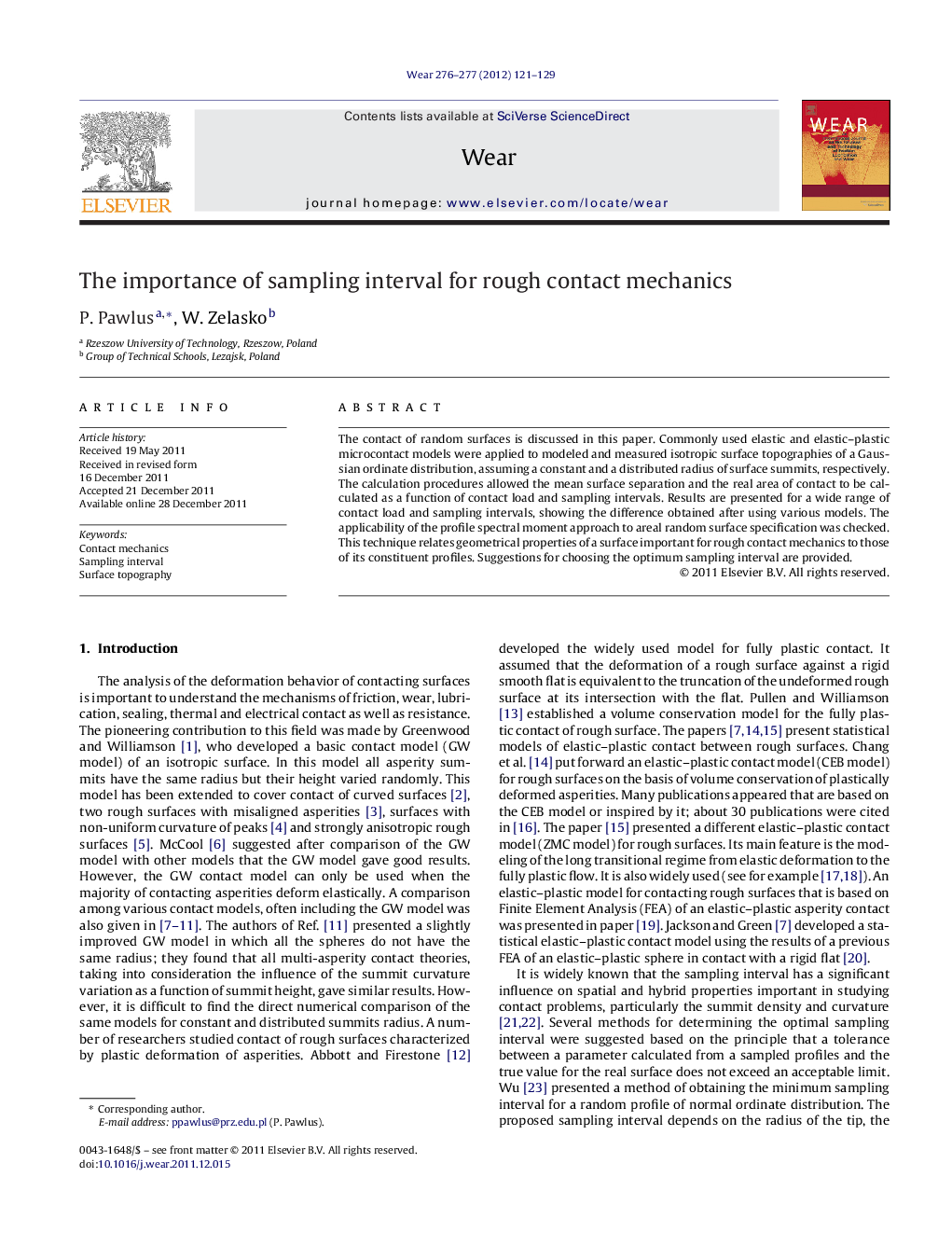| Article ID | Journal | Published Year | Pages | File Type |
|---|---|---|---|---|
| 617988 | Wear | 2012 | 9 Pages |
The contact of random surfaces is discussed in this paper. Commonly used elastic and elastic–plastic microcontact models were applied to modeled and measured isotropic surface topographies of a Gaussian ordinate distribution, assuming a constant and a distributed radius of surface summits, respectively. The calculation procedures allowed the mean surface separation and the real area of contact to be calculated as a function of contact load and sampling intervals. Results are presented for a wide range of contact load and sampling intervals, showing the difference obtained after using various models. The applicability of the profile spectral moment approach to areal random surface specification was checked. This technique relates geometrical properties of a surface important for rough contact mechanics to those of its constituent profiles. Suggestions for choosing the optimum sampling interval are provided.
► The separation between contacting surfaces decreases with the higher sampling interval. ► The contact area was higher for larger sampling interval. ► Summit density is overestimated by spectral moments approach for high α and ρ values. ► Sampling interval should be selected, for which correlation between neighboring ordinates would be smaller than 0.85. ► For a given load, the true area of contact was smaller after consideration of the peak curvatures distribution.
